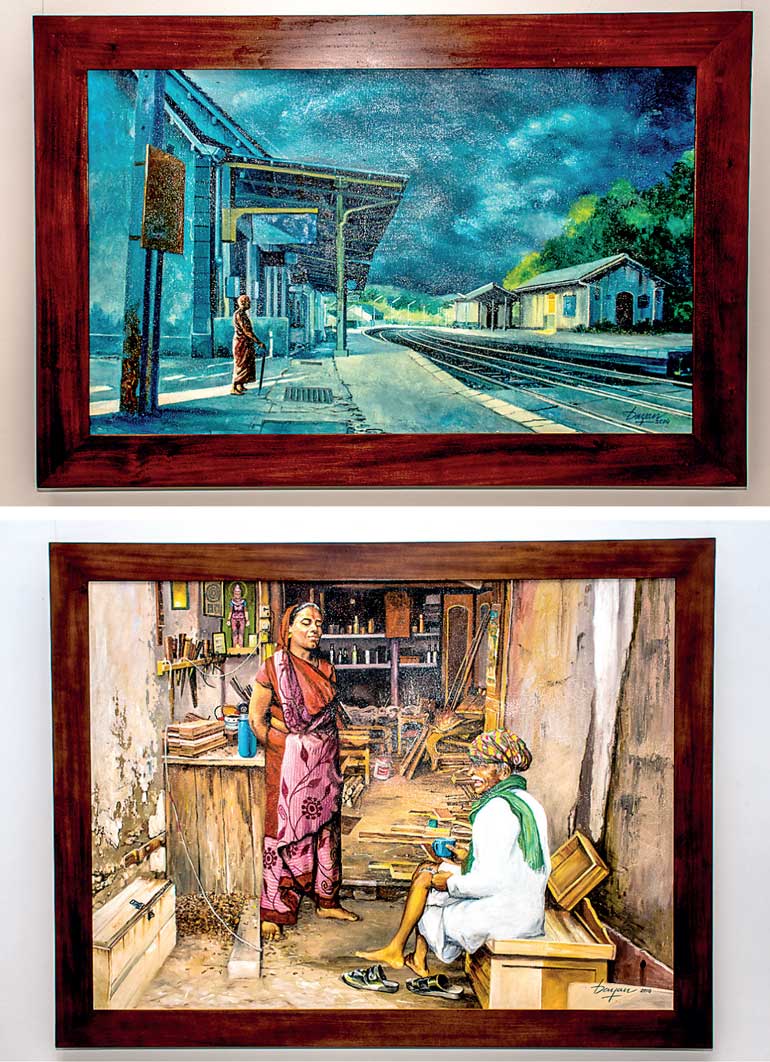Monday Dec 01, 2025
Monday Dec 01, 2025
Friday, 4 November 2016 00:01 - - {{hitsCtrl.values.hits}}
 He squints as he tries to adjust his eyes to the blaring light. Coming from a darker, more interior location, heading outdoors brings to his face an expression that causes the wrinkles from all the years of hard work to line up in attention across his forehead. His
He squints as he tries to adjust his eyes to the blaring light. Coming from a darker, more interior location, heading outdoors brings to his face an expression that causes the wrinkles from all the years of hard work to line up in attention across his forehead. His  candid expression has been caught on an oil on canvas painting, however his gaze follows you around as you make your way around the room continuing to be in awe of the other exhibits.
candid expression has been caught on an oil on canvas painting, however his gaze follows you around as you make your way around the room continuing to be in awe of the other exhibits.
However, the man with the wrinkles, which also happens to be one of my three favourites, is just one among the 30 canvases that was at the Lionel Wendt. The beautifully curated exhibition ‘Talking Brush’ by Dayan Kottachchi took place from 21-24 October making it his third successful exhibition that saw through its completion.
One of the most striking features that are visible in Dayan’s paintings is the perfection achieved through imperfections. While there is no shortcoming whatsoever in the brush strokes of the canvas, Dayan’s images are not of perfect images or of a perfect world. The paintings capture the unwashed dishcloth and the naked bulb hanging in the kitchen with no lampshade to cover it, because after all, that is what our kitchens actually look like once the party has left the house.
The same goes of the wood workshop that has dust all over and the rust on the lamppost by the railway station that one would observe while waiting on a (probably delayed) train.
However Dayan’s sense of reality goes beyond the rust on lampposts. Despite neither being a connoisseur nor a patron of fine arts it doesn’t take an expert to judge the play of shadows that come through in the paintings. The artist ‘keeps it real’ in every sense of the word by ensuring that the shadows of each of his subjects are as accurate as the effect the midday sun would have on it.
But Dayan’s capture of the human expression does not stop there. He has not only perfected the art of capturing subtle imperfections in his subject but has also been able to meticulously reproduce the expression on an individual’s face mid-conversation and equally enthralling nuances that we would otherwise miss out on our otherwise rushed world. When I look at Dayan’s paintings, I find a piece of something that I might have missed out on while speaking to a friend earlier during the day when I looked into my phone while conversing with her and trying to multi task without actually paying attention.
Dayan’s exhibition would not be complete if we fail to address the meta-art that is going on in most of his paintings. While his complete collection is a celebration of all forms and walks of life, it is also a celebration of all forms of art that is not limited to the fine arts. In a world where art is either commercialised or unfairly compromised for, Dayan’s paintings have been able to sing out the story of the passionate cellist that continues to produce beautiful scores of manuscript or the dancer that practices until she attains perfection.
Despite being an art director during the day and a fine artist by the weekend, Dayan is among the few of the individuals that have traversed on the path of finding a balance between following his passion and incorporating his creativity to a daytime career. In his own words, “Never think you are good enough. For as long as you remain your biggest critic, there will always be room for you to keep striving towards the standard you aspire to reach one day.”